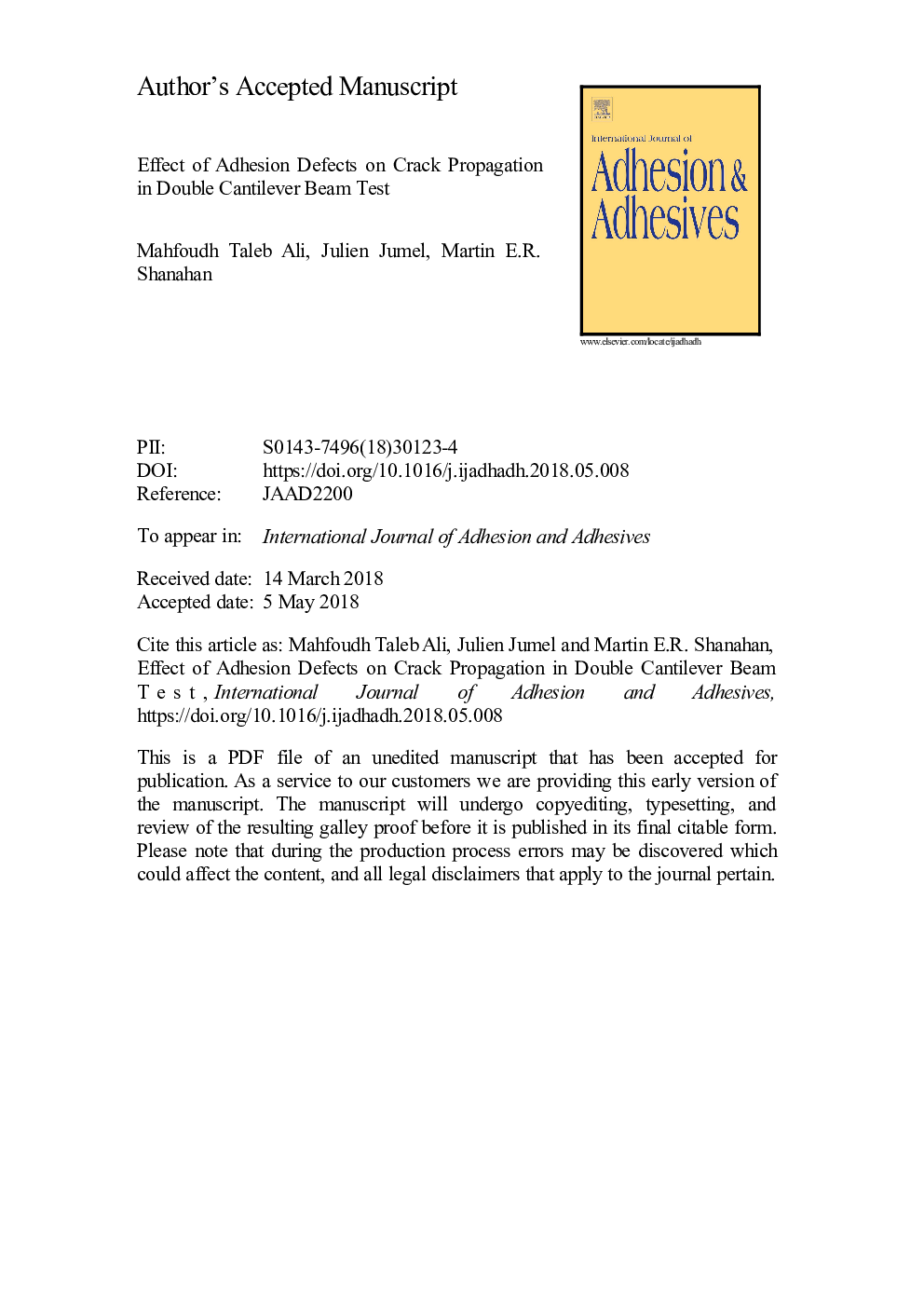| Article ID | Journal | Published Year | Pages | File Type |
|---|---|---|---|---|
| 7170926 | International Journal of Adhesion and Adhesives | 2018 | 27 Pages |
Abstract
Double cantilever beam (DCB) tests were performed on specimens consisting of aluminium substrates bonded with an epoxy adhesive film and containing strips of poor adhesion perpendicular to the crack propagation path. To achieve strong adhesion and cohesive failure in the adhesive in the nominal state, P2 etching protocol was used. Artificial adhesion defects were obtained by spraying PTFE particles, a dry lubricant, onto the substrate prior to bonding. Masks were used to control precisely the position and extent of the contaminated zones. The peculiar phenomenon attributed to such crack / defect interaction is an unstable/dynamic propagation regime. The crack onset and arrest conditions are investigated here by rewriting the energy balance analysis of the DCB test. More sophisticated numerical simulations were also performed for refined investigation of the dynamic crack propagation regime.
Related Topics
Physical Sciences and Engineering
Engineering
Mechanical Engineering
Authors
Mahfoudh Taleb Ali, Julien Jumel, Martin E.R. Shanahan,
